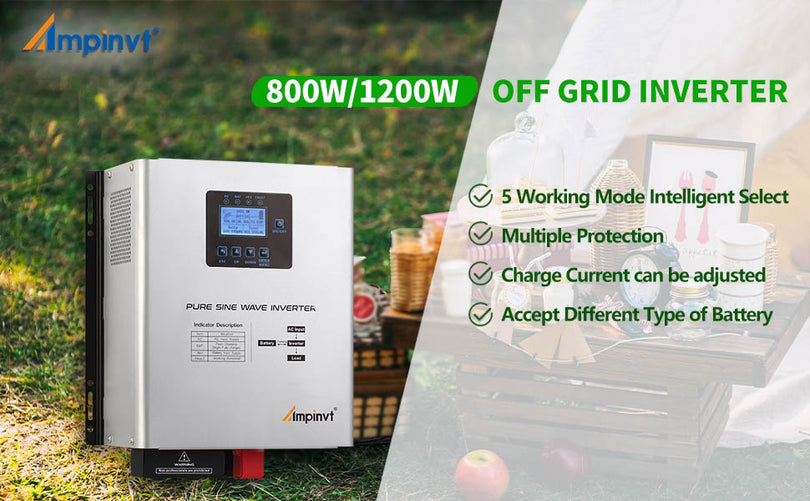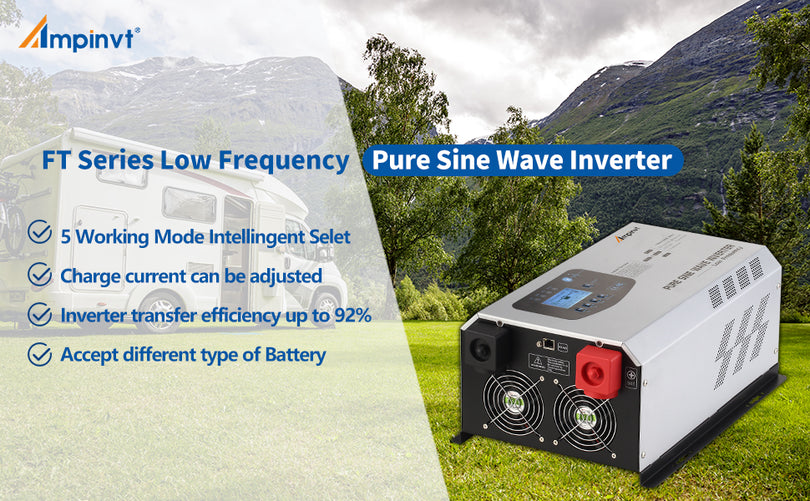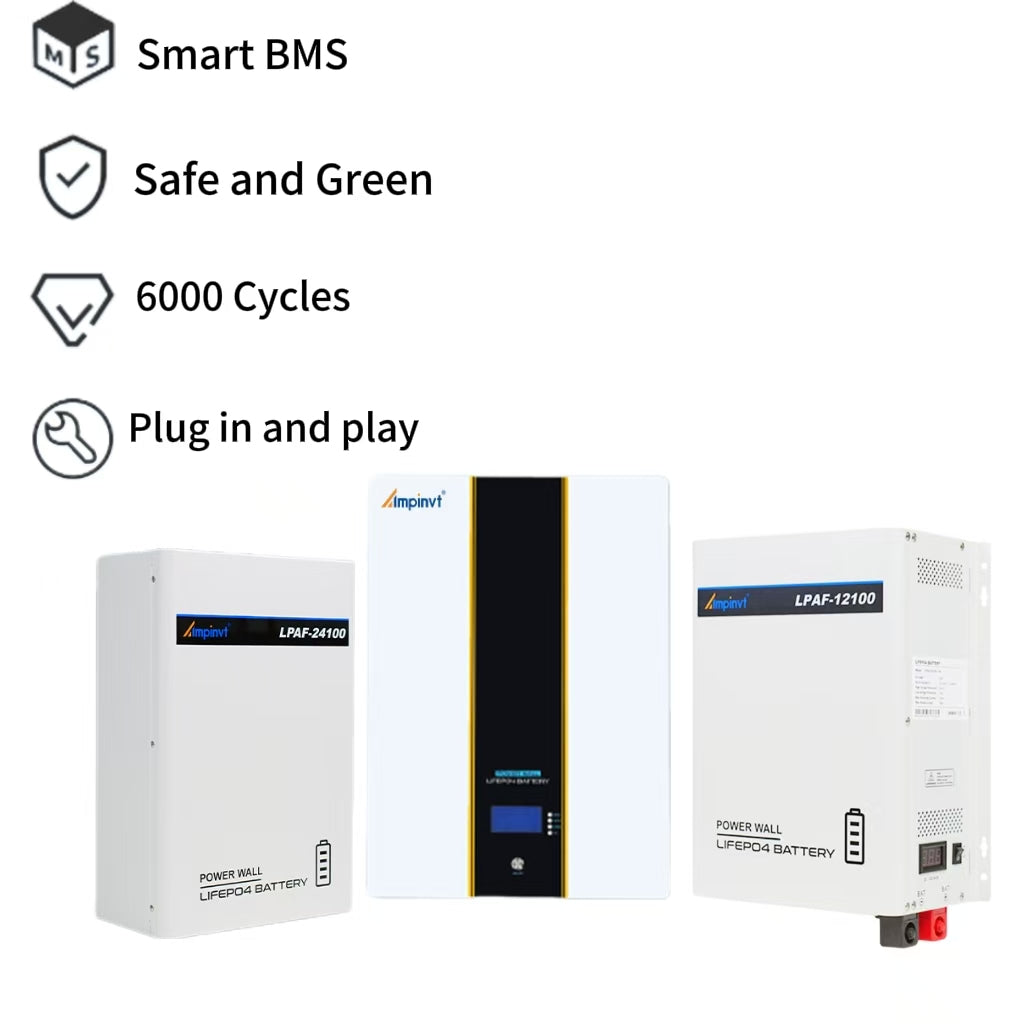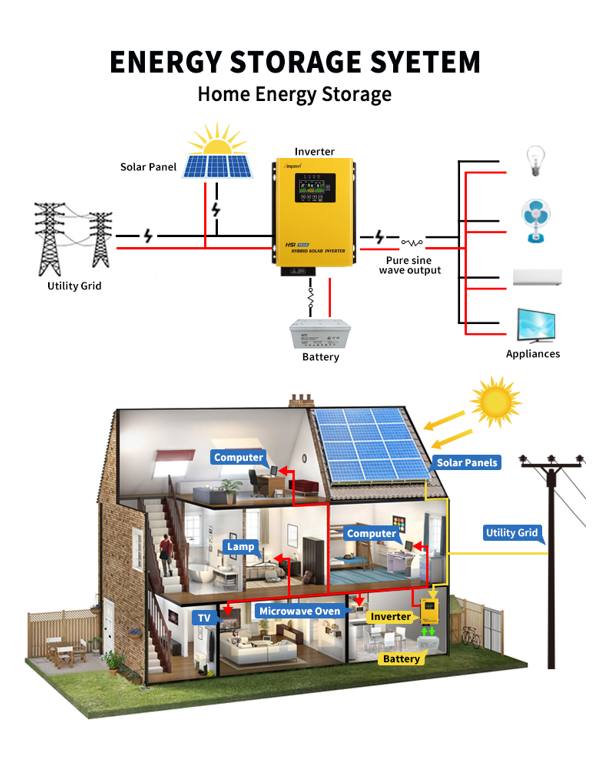As solar off-grid systems become increasingly popular, choosing the right battery is critical to maximizing energy storage and efficiency. With a wide range of battery types to choose from, understanding their differences, benefits, and how they performance in off-grid applications is critical. This article will guide you through the process of selecting the most suitable battery for your solar off-grid system, ensuring you get value for your investment.
Types of batteries suitable for off-grid solar systems
1. lead-acid batteries (Seal, AGM, Gel, Flooded)
Lead-acid batteries have been a traditional choice for solar off-grid systems. They come in two main types: Flooded lead-Acid (FLA) and Sealed lead-Acid (SLA) including Absorbent Glass Mat(AGM) and Gel batteries.
Flooded Lead-Acid(FLA) Batteries
.Cost-Effective: FLA batteries are relatively inexpensive and widely available.
.Maintenance-intensive: They require regular maintenance, including checking water levels and preventing sulfation.
.Lower Cycle Life: Typically lasts 300-500 cycles, which is lower compared to lithium batteries.
Sealed Lead-Acid (sLA)Batteries
.Maintenance-Free: SLA batteries,including AGM and Gel, require no maintenance.
.Limited Cycle Life: Similar to FLA, they have a shorter lifespan with fewer cycles.
.Sensitive to Temperature: Performance can degrade in extreme temperatures.
Pros:
.Lower upfront cost
.Reliable performance in moderate conditions
Cons:
. Heavier and bulkier
.Lower energy efficiency
.Requires maintenance (for FLA type)
2. LiFePO4 vs Lithium- lron batteries
LiFePO4 batteries and traditional Lithium-iron batteries are both popular choices for various applications, but they have distinct differences that make them ideal for different uses.
Chemistry and Stability
LiFePO4 Batteries: These batteries are made with lithium iron phosphate in the cathode. They are recognized for their thermal stability and safety, thanks to the phosphate-based chemistry that is more stable and less likely to overheat or experience therm a runaway.
Lithium-iron Batteries: Traditional lithium-iron batteries often use lithium cobalt oxide (liCoO2) or other variations in the cathode. While they offer high energy density, they are more prone to overheating and can pose a greater fire risk if damaged or improperly handled.
Energy Density.
LiFePO4: Generally, these have a low energy density compared to traditional lithium-iron batteries. This means they are bulkier for the same amount of stored energy.
Lithium-iron: High energy density makes them smaller and lighter for the same capacity, which is a significant advantage in portable electronics and electric vehicles.
Cycle Life
LiFePO4: They usually have a higher and longer cycle life, often exceeding 2000 cycles. This makes them suitable for applications.
Lithium-ion: Typically has a shorter cycle life, with most rated for about 500-1000 cycles.
Cost:
LiFePO4: Tend to be more expensive upfront due to their longer life and stability.
Lithium-iron: Generally cheaper in terms of initial costs, but might need more frequent replacement.
Impact:
LiFePO4:These batteries are better for the environment because they have a more stable chemical composition and use less harmful materials.
Lithium-iron: The use of cobalt and other heavy metals can raise environmental and ethical concerns, especially regarding mining practices.
Applications:
LiFePO4: Commonly used in applications requiring long life and stability, like solar power storage, electric vehicles, and backup power systems.
Lithium-iron: Widely used in consumer electronics like smartphones, laptops, and also in electric vehicles where weight and space are critical factors.
Overall, selecting between LifePO4 and traditional Lithium*ion batteries hinges on the unique needs of the application, taking into account factors such as safety, dimensions, weight, energy capacity, lifespan, expense and ecological considerations. LiFePO4 batteries are advantageous for their safety and extended life, where as conventional Lithium-ion batteries excel in offering greater energy density and compactness.
What factors are considered when selecting batteries for solar off-grid system?
1. Cycle life and depth of discharge
Cycle Life:Determines the number of times a battery can be charged and discharged before it loses capacity.
Depth of Discharge (DoD):Indicates how much of the battery's capacity is used before it needs to be recharged. A higher DoD means more usable energy.
2. Cost and Performance
Initial Investment:Lithium batteries have a higher upfront cost, but offer better long-term value due to their longer life and efficiency.
Total Cost of Ownership:Consider long-term costs, including maintenance, replacement and energy loss.
3. Environmental Impact
Recycle ability:Lithium and lead-acid batteries have different recycling processes, with lead-acid batteries being more widely recycled.
Toxic materials:Nickel-cadmium batteries contain cadmium, which is harmful to the environment and requires proper disposal.
4. Temperature tolerance
Climatic conditions:Choose batteries that will operate efficiently in the specific climate where your off-grid system is located. Best practices for maintaining solar off-grid batteries.
5. Brand and Warranty
Choose a recognizable brand, which tends to have better performance and quality batteries and a good warranty.
In addition to this, it is important to note that the battery voltage needs to be the same as the DC voltage of the inverter, and the power capacity of the battery should be about the same as or bigger than the rated power of the inverter.
Overall, the choice between LifePO4 batteries and conventional lithium-ion batteries depends on the specific needs of the application, taking into account safety, size, weight, energy capacity, lifetime, cost and ecological factors. The advantages of lithium iron phosphate batteries are safety and longevity, while the advantages of conventional lithium-ion batteries are high energy density and compactness.





